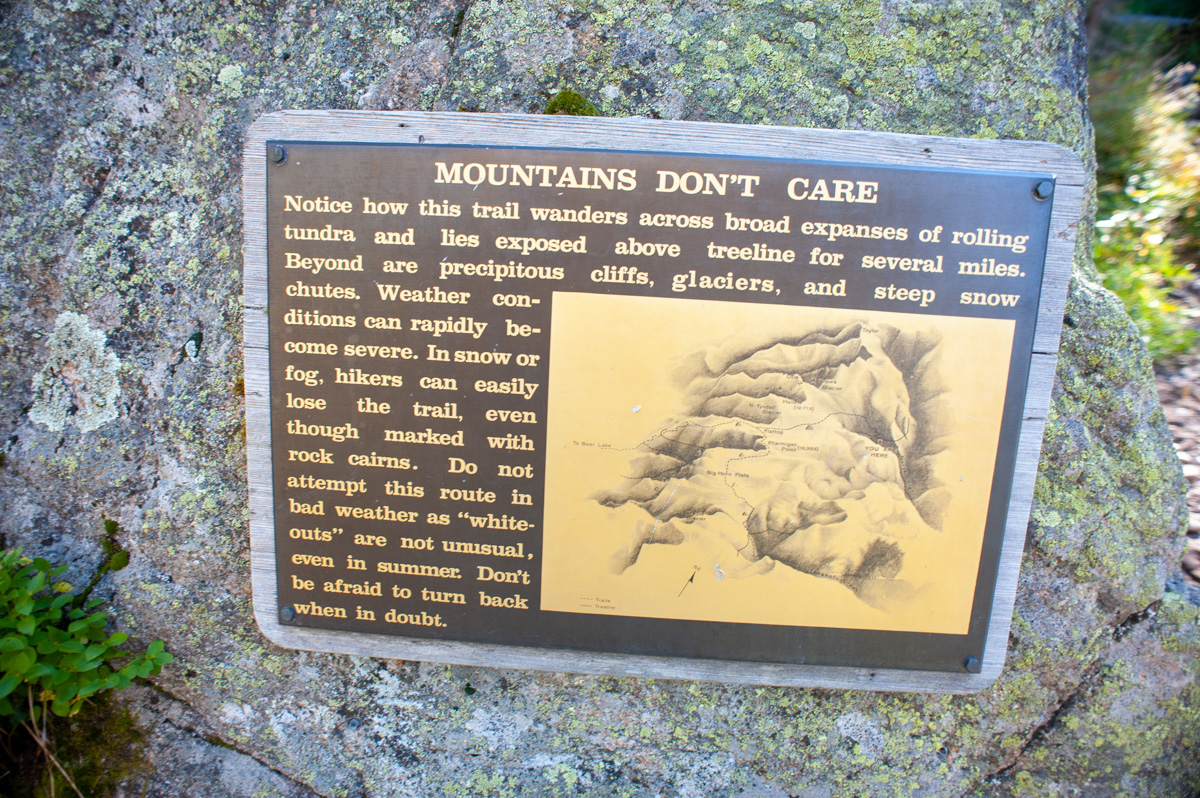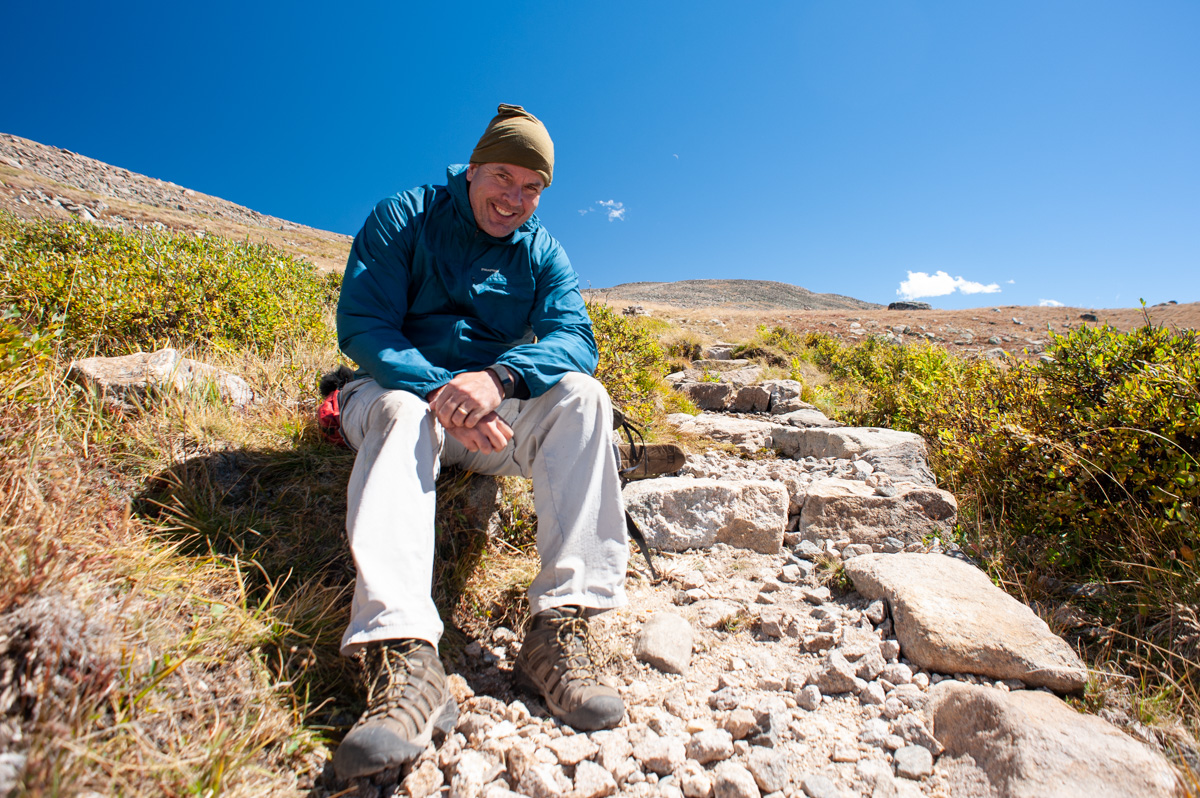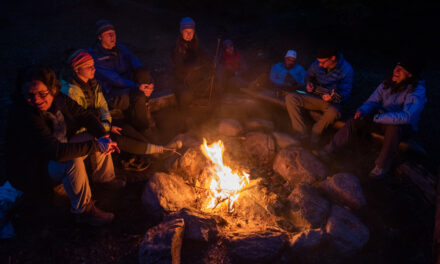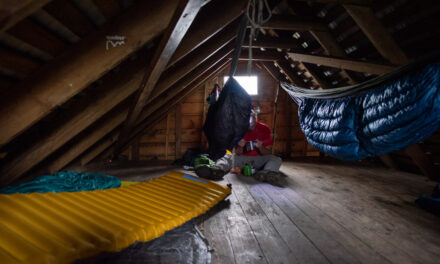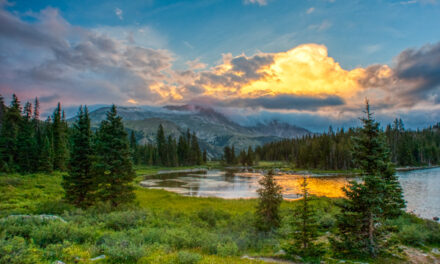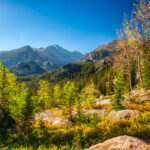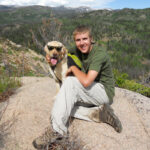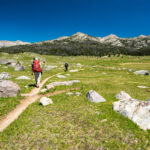Hypothermic Moonscape on Bighorn Flats
Bighorn Flats – Rocky Mountain National Park, CO
6
SEPTEMBER, 2016
Anyone planning to hike the iconic Continental Divide Trail ‘Loop’ out of Grand Lake, Colorado, likely knows about the Bighorn Flats. If they don’t, they risk their lives if they hike the ‘CDT Loop.’ No other stretch of trail I have hiked is as long, exposed, and at such a high altitude as the 6-mile traverse across the 12,000-foot+ Bighorn Flats. I was fortunate to hike the traverse in near-perfect weather – sunny skies and a low probability of precipitation. Others before me weren’t so lucky. When I received my pre-hike ranger briefing at the Backcountry Permit office the day before my hike, the Ranger was coordinating a rescue of a group that had been caught in a thunderstorm on the Bighorn Flats. Though I didn’t have gnarly weather to contend with, the Bighorn Flats did provide me with one of the scariest experiences I’ve ever had while backpacking.
Traveling to Grand Lake and my CDT Loop Hike Plan
When planning Rocky Mountain NP CDT Loop hike, I used an article on the ‘CloudHiking’ website. You can still find that article here. One of the things I liked most about that specific hike report was the PDF maps at the end. I sent those maps to my iPhone and used them during my hike. Travel to Grand Lake was uneventful. I flew into Denver, rented a car, and drove up the mountain and north to Grand Lake. Lodging was in a small cabin in the historic Grand Lake Lodge. I planned to start early the following day from the north Inlet trailhead and hike the CDT Loop counter-clockwise. My permit was for the first night at the Ptarmigan CG. Then over the Bighorn Flats the 2nd day and to the Granite Falls CG. Finally, downhill the 3rd day and back to the car to complete the loop.
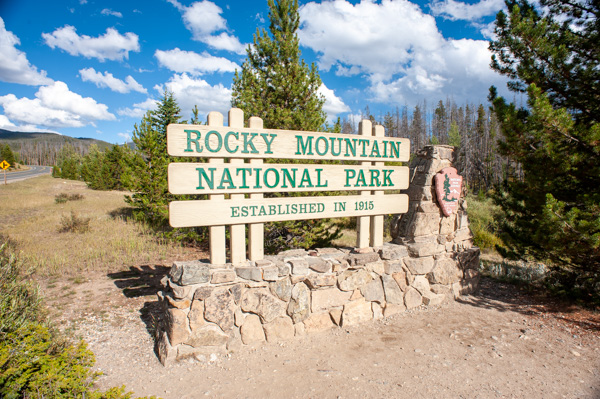
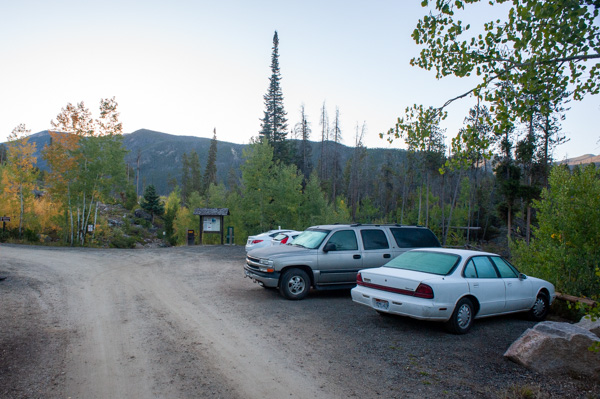
First half of the CDT Loop hike up to the Bighorn Flats


The CDT Loop hike is a relatively simple three-day, 20-mile hike. You can hike it either clockwise or counterclockwise. Either direction you choose, the first half of the hike is moderately uphill, and the 2nd half is equally downhill. I went counterclockwise. My first night’s camp was at the Ptarmigan campground. It was not my first choice, but it’s what they gave me on my permit. My preference was the July campground, the closest campground to the Bighorn Flats traverse. On the 2nd day, I proceeded up many gently graded switchbacks before reaching the July campground. After July, I emerged above the treeline. There were then five more long switchbacks, after which I reached the Goathorn Flats area.
“Climb the mountains and get their good tidings. Nature’s peace will flow into you as sunshine into trees.” – Malcolm Boshier
Reflecting on the CDT Loop hike
‘The entire CDT Loop hike is beautiful and enjoyable. The trails were well maintained and very gently graded, different from what I was used to from my other Colorado hikes. Even though the entire first day and much of the 2nd was nonstop uphill, I found the hiking pleasant and manageable. The views of the forest and surrounding mountains were sublime, especially when I got above treeline. But in the back of my mind was always the Bighorn Flats. The Bighorn Flats traverse dominates the CDT Loop hike. My pre-trip research had told me to beware of the Bighorn Flats, especially during Colorado’s August monsoon season. Late afternoon lightning storms were ubiquitous, and there was no shelter for over 6 miles. I knew that if I were caught in a lightning storm on the Bighorn Flats, it would be life-changing at best and life-threatening at worst. I was hiking in early September, but the Ranger had warned me storms were still occurring every afternoon.
Bighorn Flats
The scene before me was otherworldly when I emerged at the top of the switchbacks after the July campground. It looked like I was on the surface of the moon. The entire area was flat, grass-covered, and strewn with basketball-size rocks in every direction as far as my eyes could see. Fortunately, the skies were clear and sunny, and there was no hint of stormy weather brewing. Any possibility of shelter was non-existent. I paused and imagined what it would be like to be in the middle of the Bighorn Flats when lightning storms were brewing. It would not have been pleasant! Though bad weather was not a concern, I began recognizing another equally dangerous issue that was starting to creep into my hike.

Hypothermia
Though it was sunny, the day was cold – low 40’s with considerable wind. During the climb, the body heat from the exertion kept me reasonably warm. But once I hit the treeless and table-top flat Bighorn Flats, three things soon hit me: (1) my exertion level, and generated heat, dropped dramatically, (2) the wind picked up to a steady 30-MPH+, and (3) the sweat that had soaked my clothes during the climb added significantly to the convection cooling. I started shaking, and fear started creeping in. But the surreal setting didn’t lend itself to stopping. The wind howled, and I just wanted to get out of there! I kept hiking with a mental state quickly approaching panic. But soon, my vision started to tunnel with blackness, and I knew I either had to stop or I would pass out.

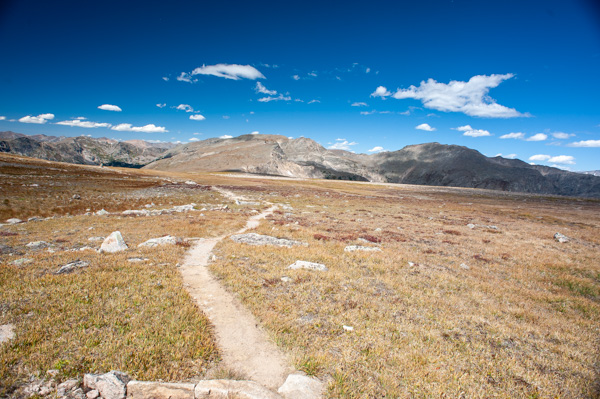
Tanking up, getting over the summit, and heading down
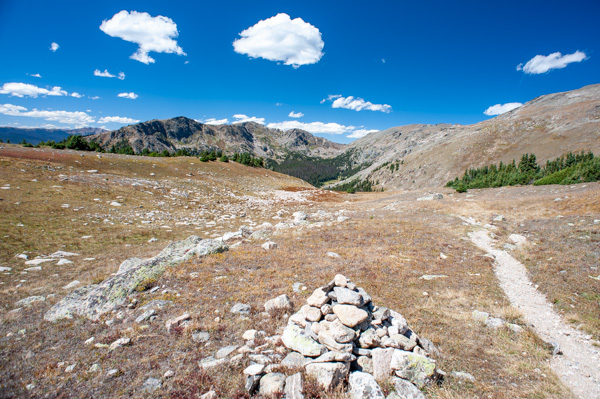

I stopped at the Flattop Mountain Trail junction and sat down on the marker cairn. The rocks provided a tiny bit of shelter from the tortuous wind. First, I added a couple of wool base layers. Then I downed energy gel shots, ate candy bars, tanked up on water, and took some electrolyte pills. Mostly I just worked to get my mind under control. In hindsight, it was a great lesson in the effects of hypothermia, dehydration, low blood sugar, and altitude sickness. At the time, it just felt like near panic! It all proved to be a powerful lesson, one I’ve benefitted from many times since. The nourishment kicked in, and I resumed hiking. I soon made it to the summit, and it was all downhill from there. My mood improved quickly and dramatically. I had survived a personal test.
Conclusion – Hypothermic Moonscape on Bighorn Flats
There is an impressive metal plaque at each end of the Bighorn Flats traverse. The plaque says, “Mountains Don’t Care”. It is a warning sign outlining many of the bad things that can happen in the land between the two markers, on the Bighorn Flats. It mentions all kinds of bad weather situations, but doesn’t says anything about what can happen even in perfect weather. My mistakes were not the plaque’s fault, but I did have a short conversation with it as I passed, saying “you might want to add a few things to your list!”
Despite a little ‘drama,’ my Rocky Mountain National Park CDT Loop hike was one of the highlights of my backpacking career. After my hike, I was invited to speak at a local Boy Scout Troop meeting. They were planning to do the same hike I did and had seen my YouTube video on the hike. I was able to relay my story of the hike to them and help them prepare physically and mentally for the hike. The Troop Leader contacted me after the hike and thanked me for sharing this story – he said they felt well prepared for what they would face on the Bighorn Flats. I think I learn and improve from the many mistakes I make. In this case, I feel good that my lessons learned helped others too.
